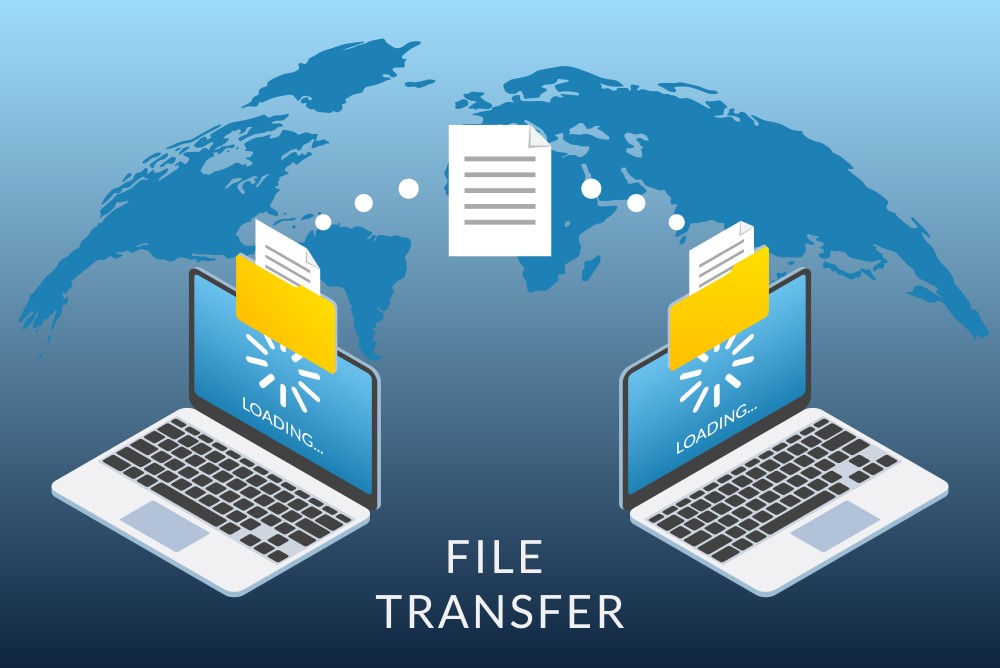
Date First Published: 11th February 2022
Topic: Computer Networking
Subtopic: Internet Protocols
Article Type: Computer Terms & Definitions
Difficulty: MediumDifficulty Level: 5/10
Learn more about what FTP is in this article.
Not to be confused with FTTP (Fibre To The Premises).
Short for file transfer protocol, FTP is a communication protocol and internet standard used to transmit files from one computer to another, usually with a username and password authentication. It is a simple way to upload, transfer, and download files from one location on the internet and between computers.
Examples of FTP are FTP sites, which allows users to upload, download, and transfer files, FTP mail, which allows users to send an email message with 'Help' in the body of the text to the email address: '[email protected]' to access and copy files even if they do not have internet access, FTP servers, which are computers that provide an FTP service, and an FTP client, which accesses an FTP server. Organisations often use FTP to send files between different computers. Website owners often use FTP to upload and download files from the servers of their websites.
Different FTP commands exist to communicate with web servers. Some well-known commands are 'send', 'get', 'transfer', and 'change directory'. Three modes exist in FTP when files are being transferred. These are called 'block', 'strea'’, and 'compressed'. Also, FTP can manage information in a string of data with no boundaries between them using the stream mode. The data is separated into blocks using block mode. In compressed mode, an algorithm called Lempel-Ziv is used to compress the data.
There are main types of FTP, which include.
In FTP, there are some security risks that exist. Examples of security risks eavesdropping and brute-force attacks. Plain FTP is insecure because sensitive information, including passwords are transmitted in plain text and unencrypted. The risk is that they could be read by someone that can perform packet captures on the network. Extensions of FTP, such as SFTP or FTPS achieve security by encrypting data with SSL. In addition, FTP is vulnerable to brute-force attacks, where an attacker uses a wordlist and guesses possible combinations in order to crack passwords. It is also vulnerable to other types of attacks, such as FTP bounce attacks, packet captures, spoofing attacks, DDoS attacks, and port stealing.
The FTP protocol has been around since 16th April 1971. It was written by Abhay Bhushan and published as RFC 114. It was replaced by RFC 765 in June 1980, RFC 959 in October 1985, RFC 1579 in February 1994, which enabled firewall-friendly FTP, also known as passive mode, RFC 2228, which proposed security extensions, and RFC 2428 in September 1998, which added support for IPv6 and defined a new type of passive mode. Other DOS command prompt with standardised commands and syntax was used by the first FTP applications.
Some well-known free FTP clients are:
| TCP/IP Protocol | Application layer | BGP• DHCP • DNS • FTP • HTTP • IMAP • LDAP • MGCP • NNTP • NTP • OSPF • POP • PTP • ONC/RPC • RTP • RTSP • RIP • SIP • SMTP • SNMP • SSH • Telnet • XMPP | Transport layer | TCP • UDP • DCCP • SCTP • RSVP • QUIC | Internet layer | IP • ICMP • NDP • ECN • IGMP. | Link layer | Tunnels • PPP • MAC |
|---|
If so, it is important that you tell me as soon as possible on this page.
Network Services Network Setups Network Standards Network Hardware Network Identifiers Network Software Internet Protocols Internet Organisations Data Transmission Technologies Web Development Web Design Web Advertising Web Applications Web Organisations Web Technologies Web Services SEO Threats To Systems, Data & Information Security Mechanisms & Technologies Computer Hardware Computer Software Ethics & Sustainability Legislation & User Data Protection